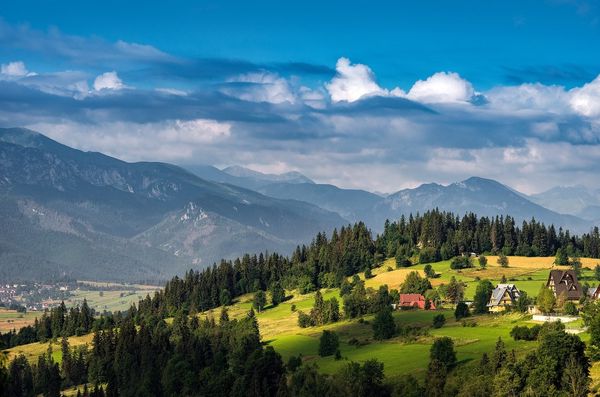As the climate crisis escalates, more nations are aiming to become carbon neutral by achieving net zero greenhouse gas emissions. But selected few countries are going even further by actively removing more carbon from the atmosphere than they produce. These exceptional carbon negative countries are leading the way in the fight against climate change.
This blog post will explore what it takes for a country to be carbon negative and list some of these rare achievers.
So whether you are passionate about helping fight climate change or just curious about who has taken this giant leap forward, read on.
Current Carbon Negative Countries
As per the current list, there are only three carbon-negative countries in the world. But other than this there are some more nations that are not carbon negative but carbon neutral. Let us tell you about the carbon-negative countries first.
1. Bhutan

Bhutan is said to be the first carbon-negative country in the world. It has achieved this position due to its remarkable efforts in reducing carbon emissions and preserving its sustainable environment. In 2020, the country won a Guinness World Record for planting more trees per capita than any other nation on earth.
Moreover, it produces just 1.1 million tonnes of CO2 which is incredibly low compared to other countries, while their extensive forests cover about 70% of land area and has enabled Bhutan to sequester much more CO2 than they emit each year.
As such, Bhutan shows how switchover from dependence on fossil fuels can lead to better air quality and climate control – all without compromising development or growth prospects.
For instance, clean energy accounts for 90 percent of electricity produced by hydropower plants that are powered by the snowmelt coming down from Himalayan glaciers. This makes Bhutan an inspiring example for many nations looking towards transitioning into a greener future with less negative environmental impact!
2. Suriname
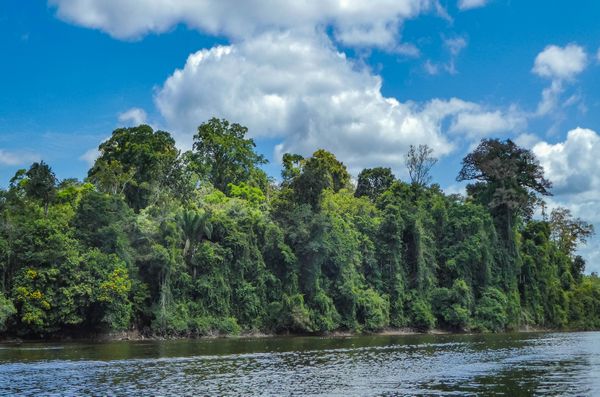
Suriname is one of the smallest sovereign states in South America and, remarkably, it’s also a carbon-negative country. The World Bank reports that Suriname has an impressive 60 percent more forest per capita than the global average.
This country is covered by lush rainforest stretching from its Caribbean coastal lowlands to the untouched jungle of its interior.
Not only do these forests help to reduce air pollution and provide oxygen, but they also serve as valuable carbon sinks—absorbing more greenhouse gases than are emitted by Suriname on a yearly basis.
As a result, this small nation plays an important role in helping keep our planet safe by serving as exemplary example for other nations seeking to become carbon-negative countries too.
3. Panama
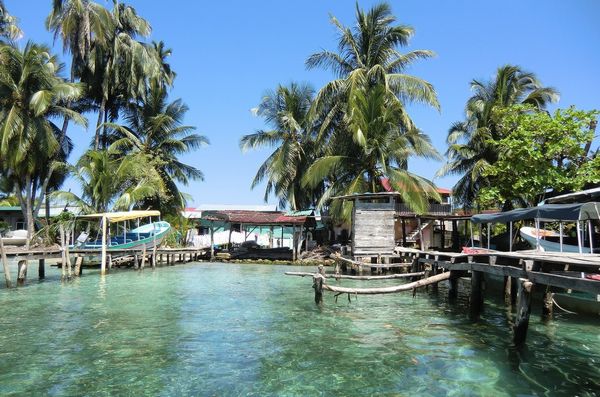
Panama is one of the few countries in the world to be certified as carbon-negative country by the U.N. climate secretariat, making it an important example for other countries looking to reduce their carbon footprint.
Panama’s progress can largely be attributed to its commitment towards protecting and reforesting its land, totaling over 33% of its territory under protection or conservation programs that also contribute heavily in curbing emissions.
As a result these efforts have placed more of importance on preserving biodiversity which has allowed the country to capture significantly more carbon gas than what would otherwise be emitted from normal human activities, resulting in negative total emissions and thus classifying it as a carbon negative nation.
Carbon Neutral Countries In The World
Carbon-neutral countries are those which has achieved the Net Zero Carbon Emissions status. Currently, only 5 countries in the world have made their names to this list, while many other nations are in the race to achieve this status by 2050.
1. Comoros

Comoros is an island nation in the Indian Ocean located between Madagascar and Mozambique, and one of very few countries that can lay claim to being carbon-neutral.
The country has achieved this status through a mix of environmental policies that have been implemented over the years, including initiatives to restore natural landscapes, reduce fertilizer use, protect tradition foraging areas from deforestation, incentivize sustainable agriculture practices and develop renewable energy sources.
In terms of its net GHG emissions 59% are attributed to CO2 but with strong policy steps forward Comoros is striving towards achieving their goal as part of meaningful climate action on global scale.
With conservation strategies such as reforestation projects aimed at bringing back native fauna and flora species coupled with outlawing unsustainable farming methods allowing forests lands to recover has given Comoros an overall carbon reduction which places them firmly in negative status within climate statistics globally.
2. Gabon
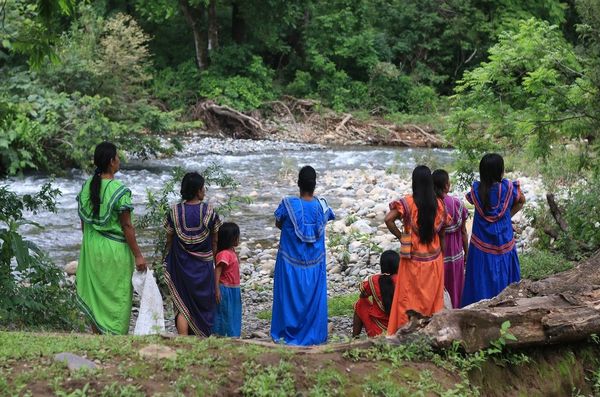
Gabon is one of the most carbon-neutral countries in the world, with an estimated 88% forest cover and incredibly low levels of carbon emission. This allows for incredible environmental conservation efforts to blossom across the country, leading to preserving endangered wildlife.
The African forest elephant is found thriving here thanks to Gabon’s commitment to preserve forests and reduce emissions from deforestation and new development projects.
In recognition of its dedication towards fighting climate change, it was awarded results-based payments at COP 26 for reducing emissions from forestry degradation while also displaying leadership in combating global warming.
Furthermore, it has set up protected natural areas that have seen wildlife populations continue to grow. These actions echo throughout the world as a reminder that we should all come together in effort if there truly is going to be decisive action on tackling climate change and preserving our planet for future generations.
3. Guyana
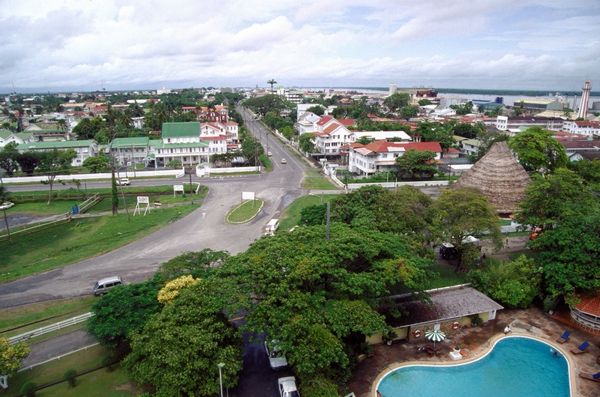
Guyana is a nation located on the northern coast of South America and is well known for its large rainforest, which plays an important role in mitigating climate change. As one of the Amazon nations, Guyana has made significant progress in reducing carbon emissions from fossil fuels and other sources of industry.
While the country is not yet on track to achieve net zero emissions, Guyana has taken numerous measures such as expanding access to renewable energy sources and adopting sustainable practices.
These efforts are essential for preserving its unique environment now and in future generations, something that tourists visiting this beautiful country will appreciate long after they’ve gone home.
4. Madagascar
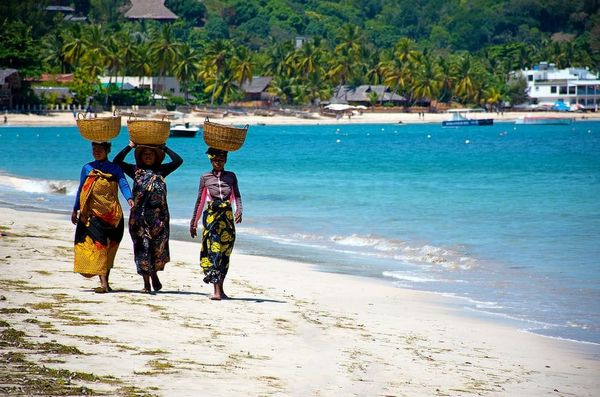
Madagascar is a country in Eastern Africa and one of the world’s highest priority countries for biodiversity conservation. It boasts important landscapes, national parks, and ecosystems that contain species found nowhere else on Earth.
The country is dedicated to its commitment to reduce greenhouse gas emissions – aiming to achieve carbon neutrality by 2050 or earlier if possible through initiatives and agreements such as the Emission Reductions Payment Agreement (ERPA).
Madagascar also has plans in place such as establishing 100 protected areas along with supporting numerous sustainable energy projects which play an important part towards being a carbon-neutral nation.
These efforts are achieving worldwide recognition while they also economically benefit local communities where tourists travel intent on showcasing environment conservation programs established within Madagascar’s boundaries.
5. Niue
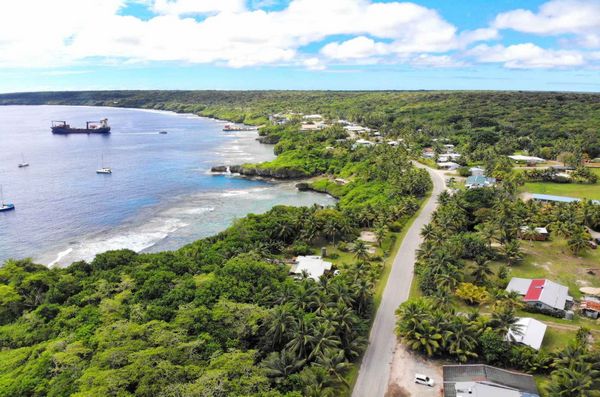
Niue is a small independent Pacific island nation that is associated with countries that have achieved net zero carbon emissions. Despite its size, Niue has contributed little to global CO2 emissions as it accounts for less than 0.0001%.
In fact, due to its extensive forests and minimal human activities, the Island of Niue is considered a carbon-negative country; this means that their forest absorbs more carbon dioxide from the atmosphere than humans emit through their activities on the island.
The majority of Niue’s greenhouse gas emissions come from sources such as gasoline-run transport vehicles and burning wood or garbage for energy production.
Final Words – Carbon Negative Countries
Carbon-negative countries are essential to the global fight against climate change. Through their commitment to reducing emissions and increasing carbon sinks, these countries are setting a positive example for others to follow.
Bhutan, Suriname, and Panama have achieved remarkable successes in becoming truly carbon negative by drastically reducing their carbon footprints and creating vast carbon sinks which absorb far more CO2 from the atmosphere than they emit.
These examples serve as inspiration for other nations that wish to become carbon-neutral or even carbon negative.
Frequently Asked Questions (FAQs)
What are carbon negative countries?
Carbon negative countries are those nations that have achieved a carbon footprint of less than zero, meaning they absorb more greenhouse gasses such as carbon dioxide than they emit.
Which countries are carbon negative?
Currently there only 3 countries that are officially recognized as being carbon negative and they are Bhutan, Suriname and Panama.
What is the difference between carbon negative and carbon neutral countries?
Carbon neutral countries have net zero carbon emissions, while carbon negative countries actually remove more greenhouse gases than they emit, making them good for the environment.
How can a country become a carbon negative?
A country can become carbon negative by investing in renewable energy sources to offset their emissions such as solar and wind power or biomass crops and switching to electric vehicles instead of fossil fuel powered cars and trucks.

